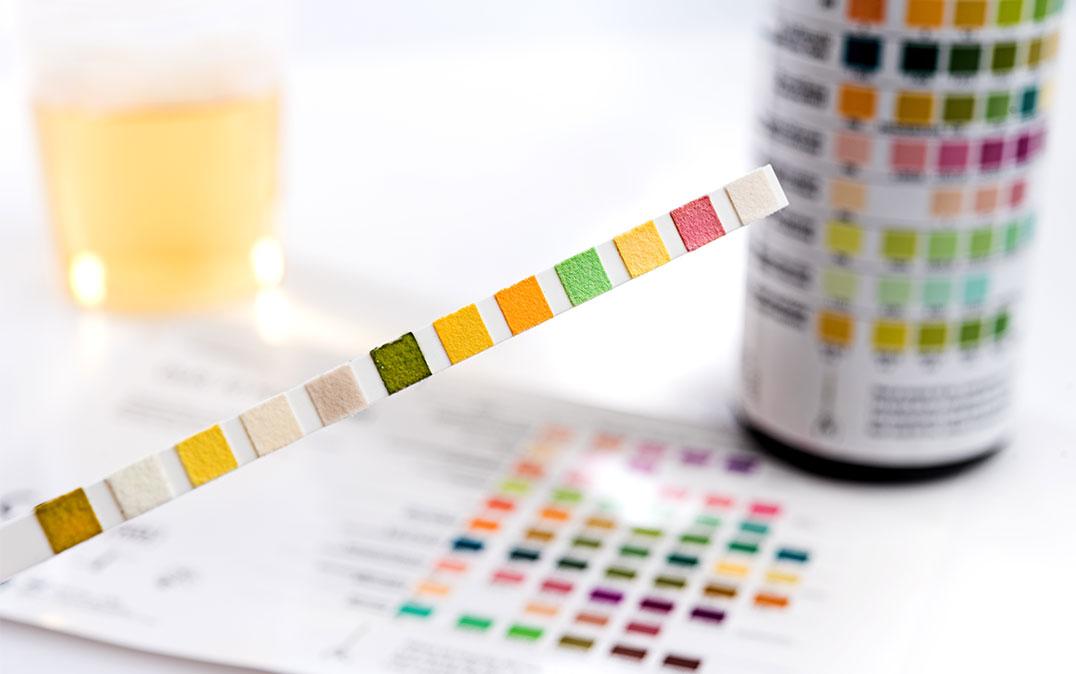Research News
Little Test, Big Impact: Dipstick Screening for Hematuria
 Image by Lothar Drechsel/Shutterstock
Image by Lothar Drechsel/Shutterstock
Researchers evaluate the cost-effectiveness of dipstick hematuria screening for the early detection of kidney and bladder diseases
Tsukuba, Japan—As the saying goes, "the sooner the better," and such is the case for the detection of kidney and urological diseases. Early detection is key, and may be achieved through the use of a dipstick urine test. Recently, researchers in Japan evaluated the potential benefits of the implementation of mass dipstick screening to detect hematuria, or the presence of blood in the urine.
In a new study published in Clinical and Experimental Nephrology, researchers led by the University of Tsukuba conducted a cost-effectiveness analysis to evaluate the impact of adding dipstick hematuria screening to the Specific Health Check-up (SHC), a country-wide mass screening program in Japan.
A dipstick urine test is a simple and affordable method to analyze aspects of urine such as concentration and pH and to evaluate urine for the presence of excess protein (a condition called proteinuria) or sugar (a condition called glucosuria). Dipstick urine tests for hematuria may be used to diagnose bladder cancer and IgA nephropathy, one of the leading causes of end-stage kidney disease. Currently, the SHC program includes the use of dipstick urine tests to screen for proteinuria and glucosuria in all participants, but hematuria is only evaluated in a portion of participants. Therefore, researchers led by the University of Tsukuba set out to investigate the cost-effectiveness of adding routine dipstick hematuria testing to the SHC protocol.
"We used economic modeling to compare two scenarios," says main author Professor Masahide Kondo. "One scenario is representative of the current SHC program, which tested for hematuria in only 38% of participants, while the other scenario reflects the implementation of dipstick hematuria testing in all participants."
The researchers developed their economic model using a decision tree and Markov modeling. The impact on healthcare costs and quality-adjusted life years (QALYs), which are used as a measure of health outcome as a result of medical treatment, were evaluated.
"Our analysis indicated that including dipstick hematuria testing in the current mass screening protocol would lead to cost-saving and improved QALYs," says author Dr. Reiko Okubo.
The research team's model showed that implementation of routine testing for hematuria would promote early detection and treatment of kidney and bladder diseases, leading to a reduction in the healthcare costs associated with treatment of more advanced disease. It is important to note that this model is based on the healthcare system in Japan, where a routine mass screening program is already in place; in countries where mass screening programs have not yet been implemented, the economic impact may vary. Nonetheless, these results highlight the value of dipstick hematuria testing in mass health screening efforts.
### This work was supported by Practical Research Project for Renal Diseases, Japan Agency for Medical Research and Development, AMED (Grant number JP20ek0310010). This work was also supported by a Japanese Grant-in-Aid for Scientific Research (B) (Grant number 19H03865).
Original Paper
The article, "Cost-effectiveness of mass screening for dipstick hematuria in Japan," was published in Clinical and Experimental Nephrology at DOI: 10.1007/s10157-021-02170-0
Correspondence
Professor KONDO Masahide
Faculty of Medicine, University of Tsukuba



